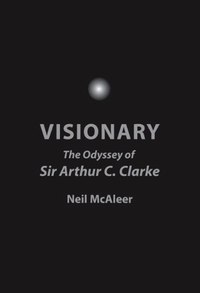Review: Visionaryby Jeff Foust
|
| Visionary offers an in-depth look at a man whose writing entertained and engaged generations of people about the promise of space. |
McAleer, who wrote an earlier authorized biography of Clarke in the early 1990s, offers perhaps as complete a look at Clarke’s life as possible in his new biography. He follows Clarke’s life in simple chronological order, from his childhood in England to his early adult life in London, working in the civil service while going to British Interplanetary Society meetings and starting his writing career. After spending World War II in the Royal Air Force working on a radar system to support aircraft landings, he dove into a full-time writing career, on topics as varied as spaceflight and diving.
Visionary describes Clarke’s life in great detail, down the itineraries of his tours of America and elsewhere as his fame as an author and a guide to the emerging Space Age grew. McAleer doesn’t shy away from some of the more controversial, or at least more mysterious, aspects of Clarke’s life, including his one, short-lived marriage to an American woman, Marilyn Mayfield, and questions about his sexual orientation. (This includes a section on the claims of pedophilia made by a British tabloid in 1998 that were later dismissed for lack of evidence.) Those issues, McAleer suggests, may explain one of the few weaknesses of Clarke’s writing: the lack of major female characters in his works, “even fewer with any hint of complexity.”
Given both the thoroughness of the book, as well as its price (a hardcover version is available at an even higher price, $150), Visionary will appeal primarily only to scholars and dedicated fans of Clarke. For those people, those, this book offers an in-depth look at a man whose writing entertained and engaged generations of readers about the promise of space.
